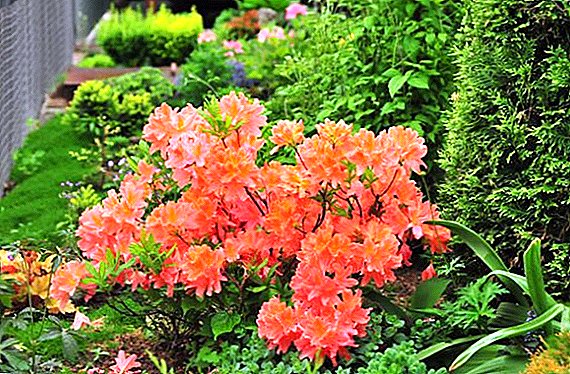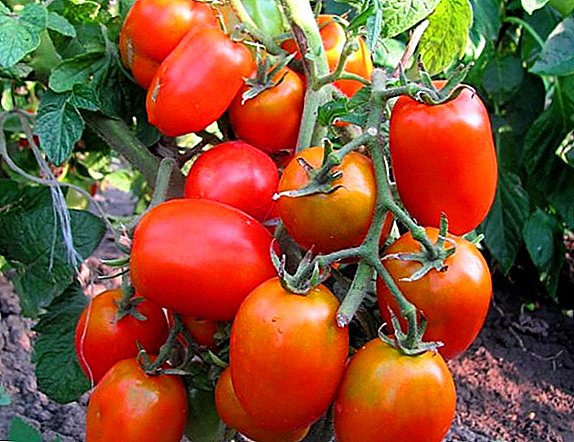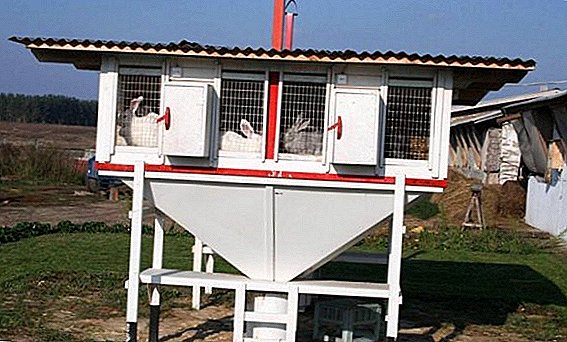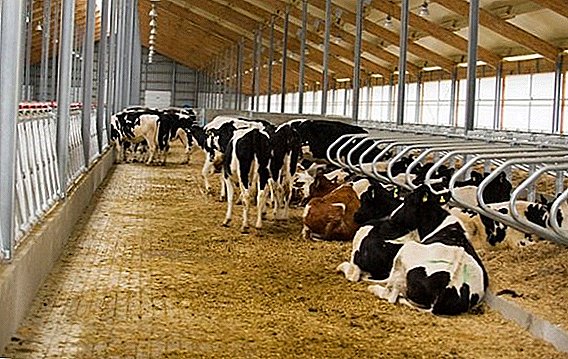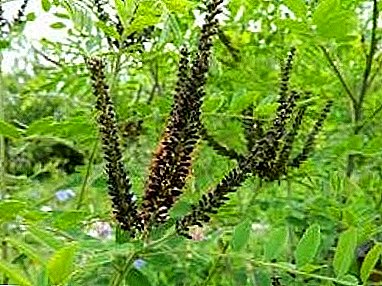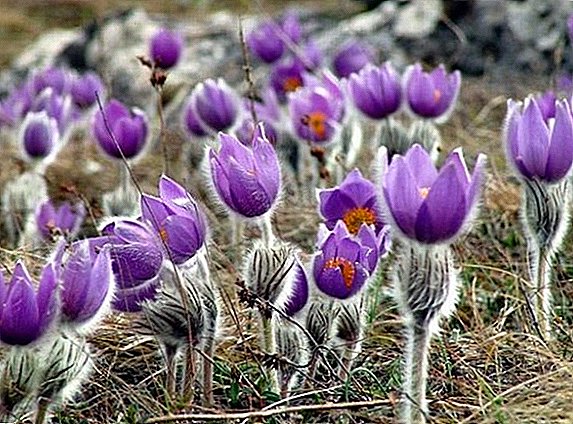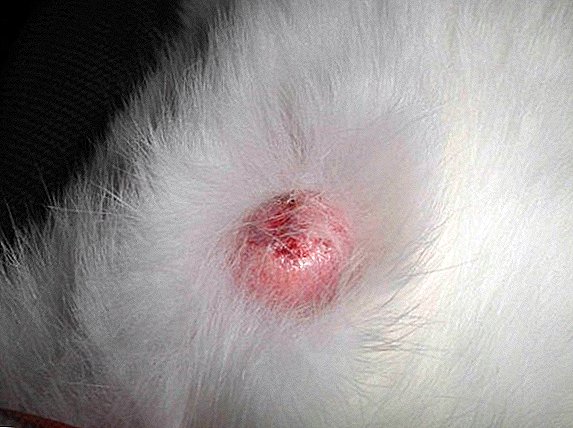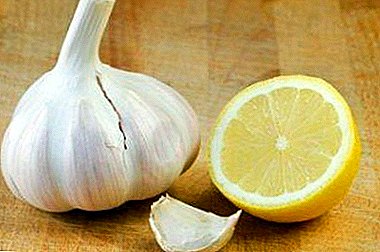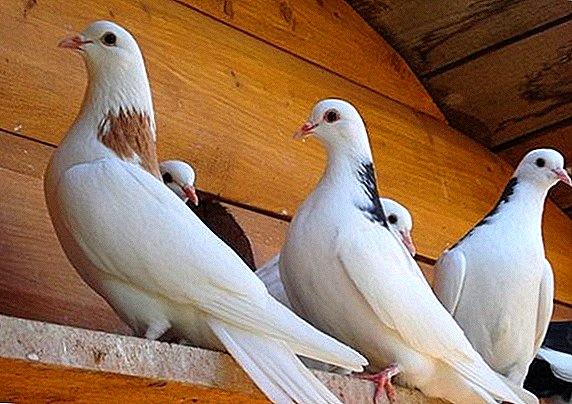 The history of the domestication of a pigeon dates back thousands of years.
The history of the domestication of a pigeon dates back thousands of years.
Today, these birds are bred mainly for meat, but there are more unusual ways to use them.
In total, there are more than eight hundred different breeds of pigeons in the world, and, according to some sources, at least a quarter of them are bred in Russia.
Let's get acquainted closer with the ten most popular of them.
Armavir white-headed kosmachi
Group - fighting (able to make various flip-flops in flight, accompanied by a characteristic slamming of wings). 
Birds have these characteristics:
- sizes are large, length 34-37 cm;
- body wide at the shoulders, elongated, tapering towards the tail;
- head white, oblong, dry, flat crown, head size 1.5-2.0 cm;
- the forelock may be absent altogether or be in the form of a conch located from one ear to the other and smoothly turning into the mane (the absence of the mane is considered a flaw, although insignificant);
- the neck is elegantly arched, not very long and not wide;
- eyes are black, eyelids contrasting bright;
- wings are developed, long, fit well to the body and converge at the base of the tail, as if lying on it;
- the tail is represented by twelve wide steering feathers which are tightly interconnected with their characteristic rounded ends;
- legs long (8-12 cm), well feathered, with characteristic hawk feathers;
- the beak is white or pale pink, thin and long (2.3-2.5 mm), generally straight, but the tip is slightly bent. Thickened skin over the beak is smooth, pink, not very noticeable;
- the color is yellow, red, passerine or black; there is no gray color in this breed;
- flight altitude - 50 -100 m;
- the overall impression is a proportionally folded bird with a proud posture.
The battle breeds of pigeons include such ones as Baku, Turkmen, Iranian, Uzbek.
Volga red breasts
The group is stately (the symbol of the breeds of pigeons differing in their particularly proud posture and beautiful proportional physique). 
It has the following characteristics:
- dimensions are not very large, and the smaller the bird, the more it is valued;
- the body is proportional, the chest is convex, slightly elevated, wide, like a short back, noticeably tapering towards the tail;
- head small, rounded, with a slightly protruding forehead, without a forelock;
- the neck is medium in size, gracefully arched, thickens at the shoulders;
- eyes are bright with a black pupil, small. Eyelids beige with dark specks, very narrow and neat;
- wings with very wide, strong and long feathers, almost reaching the ground;
- medium-sized tail, short, flat, raised high in the shape of a fan. The number of feathers varies in the range of 13-18 pieces;
- legs are short (3-6 cm), average plumage, beige claws;
- the beak is beige-pink, medium, thicker at the base, tightly compressed. The thickened skin over the beak is white, smooth, almost imperceptible;
- smooth, juicy and slightly shiny, cherry (less often yellow) on the back and base of the tail, as well as on the head, neck and chest, and cheeks, stomach, wings, a small section on the throat and a strip on the tip of the tail 1-2 cm wide - contrast white. The neck and chest have a distinct purple tint;
- high flight altitude, circular flight;
- the overall impression is a very graceful and stately bird, rightly considered one of the most beautiful in Russia.
Did you know? The most expensive pigeon in the world was sold at auction for 150,000 euros, and the record for total revenue, which was obtained from the sale of pigeons in one auction, amounted to 1,400,000 euros.
Volga band pigeons
They belong to the group of stately color-breasted. 
They can be recognized for such features:
- medium sizes;
- body wide, chest curved, back short, with a slope towards the tail;
- the head has the shape of a walnut with a flat crown, rounded nape and a broad round forehead, sharply drooping towards the beak;
- Chub is absent;
- the neck is wide at the base, narrower at the top, of medium length, beautifully arched;
- eyes of medium size, dark, eyelids light beige, narrowed and smooth;
- wings low, almost to the ground lowered, flight feathers wide and strong;
- tail flat and wide, beautifully raised, the number of steering feathers - from 12 to 16;
- legs are not long, have dense plumage ("pants"), beige claws;
- beak light with a pink shade, short, thick at the base and strongly tapering towards the tip, tightly compressed, although a small cleft between the jaws is allowed. The thickened skin over the beak is almost invisible, beige in color, soft and matte;
- Cherry with white or yellow with white. The distribution of colors in different parts of the body - similar to the Volga red chest;
- circular flight, at high altitude, can last up to three hours without a break;
- the general impression is a bird with an unusual build and a very bright plumage;
- Distinctive feature: breeders note a very caring attitude towards a partner (literally "swan fidelity") and a special responsibility when breeding offspring in Volga band pigeons.
Voronezh white-eyed (Voronezh white-toed-white-belted, bearded)
Representatives of the group of pure (chases). 
They have the following characteristics:
- average sizes (bird length - from 32 to 34 cm);
- body dry and strong, athletic;
- chest wide, curved forward;
- oblong elongated head, light gray or white, forehead colored;
- a distinctive feature of the breed is the presence of a beard and a neat sharp forelock;
- the neck is of the same color with the head, of medium size, but rather full, thinner at the crown, extends markedly towards the shoulders, smoothly moving forward in front of the chest line, and falling steeply behind the back to the back;
- eyes of dark color, with pronounced brilliance;
- wings well developed, long, tight to the body, closed at the tail, not intersecting with each other;
- tail straight and lush;
- legs are low and powerful, covered with feathers to the very fingers;
- the beak is dark, almost black, long and thin;
- color blue-gray, shiny;
- plumage is dense;
- circular flight during landing, almost vertical during takeoff, sometimes accompanied by a characteristic swaying, can last up to two hours;
- The general impression is a beautiful wide-breasted bird with a proud article and a characteristic coloring, it is notable for its cheerful disposition and lively temperament.
Breeds of pigeons are also divided into stately, postal, wild and forest, domestic, the most unusual.
Grivunas (Permians)
They belong to the group of high-flying, have such features: 
- sizes are large (35-40 cm);
- the body is proportional, strong, with good bones and well-developed muscles, while it has smooth lines;
- torso low, strong and broad chest noticeably arched forward and elevated;
- the back is wide and straight, at an obtuse angle flowing into the tail;
- head dry and smooth, slightly elongated, with a smooth line delineating the back of the head, crown and forehead;
- the neck is strong, flat, not long and not thick, but towards the shoulders it widens noticeably, without bending typical for other breeds. In the upper part smoothly passes into the chin;
- eyes are very dark, gray or brown, small in size, attentive and expressive. The eyelids are light, narrow, soft and smooth;
- wings well developed, very long, flight feathers elastic and wide. The wings meet at the base of the tail, without crossing each other;
- the tail is medium in size, flat, closed, straight and narrow, continues the line of the back, tail feathers 12;
- legs are short, without plumage, bright pink color with light claws on paws;
- the beak is long, straight, flat and thin, slightly bent at the end, the color is light pink. Thickened skin over the beak is light, elongated, small size, tightly pressed to the base of the beak;
- plumage dense and tough;
- the color is white, solid and bright, the only brown spot of a triangular shape is on the back of the head;
- flight qualities are excellent, the flight can last up to 8, and sometimes up to 12 hours. The altitude is so high that the birds are often lost sight of, going up;
- the overall impression is a large and at the same time very graceful bird, harmoniously combined, has good endurance, athletic, but not heavy;
- A distinctive feature is a good orientation in space and a great attachment to the house.
Did you know? In search of their home, some breeds of pigeons are able to cover a distance of three thousand kilometers, moving at a speed of 90 km / h.
Dubovsky pigeons
Group - high flying. 
The characteristics of the birds are:
- medium sizes;
- the body is slightly elongated, the chest is convex, rounded and rather wide, the back is long, wide at the shoulders and narrower at the bottom;
- head of elongated shape with a flat crown and low forehead. Nape in the form of a tubercle;
- the neck is slightly arched, of medium size;
- eyes are light, small, white eyelids, narrow;
- wings extended, hanging below tail, but not reaching to the ground;
- the tail is long, up to 1.9 cm, slightly raised at an obtuse angle to the back, the tail feathers in the amount of 12 to 14 pieces are well connected with each other;
- legs are short, without plumage, color is bright pink;
- beak straight and long (up to 2.4 mm), white. Jaws tightly closed. Thickened skin over the beak is light, small in size;
- the color is double - blue (gray), blue or brown and white: the colored areas are located on the chest, neck, head and stripes on the tail, the white color is present on the shoulders, sides, the main part of the tail, abdomen and wings, and on the shoulders and The wings have small colored patches resembling epaulettes. Gray pigeons have a less uniform coloration than gray-gray, the upper part of their body is very dark, while blue dark ones are only the head and neck, the latter even casts a purple or green color. Also completely white Dubrovsky pigeons are found;
- flight altitude is very large, circular flight, can last up to nine hours without a break;
- the overall impression is a small winged winged bird with a low-set body and color that resembles magpies;
- Characteristic features - excellent flight performance and excellent orientation in space.
The high-flying breeds of pigeons include such as Nikolaev, Hungarians, Hungarian, grivunas, Sverdlovsk.
Coffee Turman
Turmans (in European terminology - rollers) combine a whole group of pigeons that differ from other birds in a very unusual flight, during which birds can perform a variety of tricks, including somersaults forward, backward and even around their axis ("through the wing").
Important! In order for Turmans to demonstrate their abilities properly, they are specially trained and trained, just like professional athletes.
Coffee Turmans are of Tula origin based on the old Russian breed of pigeons, known as Rooks or Lobachi. Group - stately, battle (spinning in the air). 
Characteristic features of birds:
- medium sizes;
- elongated body;
- head broad, as if faceted ("square"), with a powerful forehead and a large nape. At the crown there is a characteristic wide tuft from one auricle to the other;
- the neck is long;
- eyes are light gray, silvery, very expressive, with characteristic brilliance and wide eyelids;
- the wings are powerful, well developed;
- the tail is small and dense, continues the line of the back;
- legs are short, non-feathering, bright pink; claws are light;
- beak beige, short but wide and thick, dull at the tip;
- the plumage is smooth, dense, well-fitting to the body;
- the color may be different, but always very bright and thick. The main shades are red-brown, green in the neck, can be fawn;
- the flight is accompanied by dizzying stunts in the air at high altitude, virtuosic and exciting;
- the overall impression is a very beautiful bird with touchingly wet eyes;
- Characteristic features - eyes with a tear, bare rather noticeable (up to 0.2 cm) skin area around the eyes of a delicate beige color, contrasting with the black color. An exceptionally rare breed, breeding poorly.
Did you know? In London, pigeons are used to monitor the environmental situation in the city. They attach special sensors to the birds (they operate on solar batteries), which not only record the level of air pollution, but also continuously transmit the received data via satellite to the Network. These data are placed on a special site, access to which is absolutely open.
Black-piebald (black-roan, Kaluga) turmans
Group - stately, battle. 
Birds have these characteristics:
- sizes are small (body length - from 34 to 36 cm);
- the body is long and elongated, wider at the shoulders, tapering towards the tail, set low;
- small head, dry, rounded or "square" with a high forehead, steeply dipping towards the beak;
- a forelock may be absent or exist, in the latter case it passes below the occiput line, connecting one auricle with another;
- the neck is long, harmoniously fitting into the general proportions of the body;
- the eyes are large, slightly "protruding", deep dark color. Eyelids bright, with delicate skin;
- wings well developed, long, sloping below tail level;
- the tail is wide, widening in the shape of a fan and noticeably elevated at an angle to the back line. The number of steering feathers - 12 pieces and more;
- legs without plumage, short;
- the beak is very short and thick, with a barely noticeable bend downwards, which gives the bird a harmonious look, white;
- black and white color (like in a magpie): dark areas on the head, neck, chest, and also on the back and tail, white - “mask”, a small area under the beak (“shirt front”), belly, thighs, groin and wings . The area near the tail may be white or black. On the neck, a rich black color is noticeably green;
- the height of the flight is large, the flight is circular, accompanied by somersaults with a sharp fall and a further rapid rise to the previous height;
- the general impression is that the bird looks a little awkward;
- Characteristic features - excellent flight performance.
Did you know? The pigeon, which is considered to be a symbol of peace in our country, is in fact very often used by humanity for not at all peaceful purposes. Thus, during the First World War, approximately 65,000 of these birds consisted in the pay of the British and French armies, and during the Second World War, these birds were attracted four times more to the “military service”. The main task of the birds was the transfer of secret military reports or photographing the location of enemy positions. The penalty for killing the British military pigeon was, in terms of modern prices, about four thousand pounds!
Kamyshin pigeons or reeds
Birds belong to the group of hunters and have such features: 
- sizes are large (from 35 to 40 cm in length);
- the body is powerful, strong and strong, with well-marked muscles, "taut", low set;
- head proportional to the body, rounded;
- Chub is absent;
- a high, but not very wide forehead passes into a flat crown, then the back of the head and the back with one smoothly delineated line;
- the neck is medium in size, has a beautiful crimson ebb;
- eyes pale yellow, eyelids too dull, small;
- the wings are long and well developed, hang down below the tail (the little winged bird);
- tail set high, the number of tail feathers - from 15 to 23;
- legs are short, without plumage, bright pink, claws are light;
- beak long;
- the color is usually black all over the body, except for the wings, which have a beautiful snow-white color, sometimes with black ripples. Some individuals also have a white belly. In addition, there are other variations of color depending on the subspecies of the bird: brown (coffee), red, fawn and silver-blue;
- flight altitude is very large even in bad weather conditions. Circular flight, can last up to six hours without a break;
- the overall impression is a beautiful, strong, stately and exceptionally hardy bird, while looking very elegant, slim and even a bit fragile;
- Characteristics - commitment to the pack, preserving accuracy during flight; excellent orientation in space; the ability to quickly restore strength, very good immunity and adaptability to different conditions.
Ochakov pigeons
Group - high flying. 
Specifications:
- average sizes (body length - from 30 to 32 cm, body weight - from 250 to 300 g), although there are small and large representatives of the breed;
- body elongated, well developed, but light, oval with a narrowing to the tail, fine-boned, low set, has a strong slope (up to 45 °);
- the chest is wide, the chest is arched forward, the back is straight, rather long, but without breaking the proportion, with a slight roundness, is one line with the tail;
- head elongated, clearly delineated, medium size;
- the neck is short and thick, with a beautiful bend;
- глаза небольших размеров, цвет может быть различным в зависимости от окраса пера: жемчужный, жёлтый, бледно-жёлтый, красный либо тёмно-карий. Веки нежно-бежевого цвета, узкие;
- крылья не обвислые, сходящиеся к хвосту. Fly feathers are well developed, wide, but thin, they can close tightly or leave a small gap between them. The average length of the wings is 30 cm, but significant deviations are possible both in one and in the other direction;
- tail long (up to 16 cm), not raised, flat. The number of steering feathers - from 12 to 16;
- legs are short and strong. The distance between the lower leg and the fingers is from 3 to 5 cm. The plumage on the legs is absent, the color is saturated red, the claws can be light or dark, depending on the color of the plumage;
- the beak is not very long (from 15 to 20 mm), of medium size, thickened skin over the beak is dense, small in size, the color may be different - white, gray or black;
- the plumage is smooth, thick and very soft, well-fitting to the body;
- the color may be different;
- flight altitude is very large, the flight is not circular;
- Characteristic features - unlike the Kamyshin pigeons, a single, rather than flight flight is characteristic of the Ochakov breed.
Important! Experts pay attention to the fact that to train Ochakov pigeons for long flights is best in the evening or morning time. It is categorically impossible to conduct lessons after dark, otherwise the birds can be lost.
Pigeons have always enjoyed great love in Russia. It is not surprising that today Russia continues to be famous for its own, unique breeds of pigeons.  All these birds are great flyers, and each of these breeds, depending on the specific group (pure, stately, chasing, high-flying), absolutely clearly meets the requirements - whether it is fast flight at high altitude, vertical rise or virtuoso tumbling in the air.
All these birds are great flyers, and each of these breeds, depending on the specific group (pure, stately, chasing, high-flying), absolutely clearly meets the requirements - whether it is fast flight at high altitude, vertical rise or virtuoso tumbling in the air.


